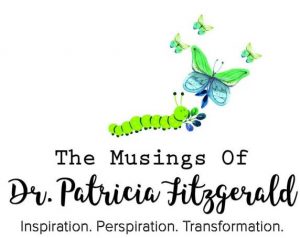“If you want to be healthy and live to be 100, do qigong” – Dr. Oz
Dr. Oz has been instrumental in bringing greater public awareness to various aspects of Eastern and integrative medicine. The quote above was from an interview with Oprah in 2007. Although has been quite a few years since Dr. Oz shared his enthusiasm for qigong with such a large and captive audience, a renewed interest in this ancient practice with countless modern applications continues to rise.
And while I sincerely appreciate Dr. Oz’ perspective on the amazing longevity benefits of qigong, longevity is just one of its incredible superpowers.
As a 30+ year qigong student as well as an instructor for over a decade, I am always deeply humbled by its power to renew, transform, and heal body, mind, and spirit.
There is even a hospital in China known as the “medicineless hospital”, where daily qigong practice is the sole modality used to heal the sick from countless ailments.
So yes, qigong may indeed add more years to your life, but more importantly it can significantly enhance the quality of your life, health, and vitality.
Today, we’ll focus on the basics of qigong, how it differs from the more widely known practice of Tai Chi, a sampling of its many documented health benefits, the new research surrounding this ancient healing art, and a way to get started
What is Qigong?
The word qigong (pronounced: chee-gong) means: “Qi” (energy or life force), “gong” (a skill acquired through consistent practice).
Qigong is many things, but at its most foundational level it is an ancient Chinese martial arts practice that includes movement, meditation, breath awareness, self-massage, and healing sounds to enhance vitality and inner peace.
It has been practiced for thousands of years as an aspect of Traditional Chinese Medicine, thus there are thousands of different types of practices, schools, and lineages.
Unlike other forms of martial arts and exercise, qigong is universal in that it can be practiced by any person of any age and ability; either through self study (known as “Personal Qigong”) or with an instructor (known as “Clinical Qigong”).
Even if you’re 99 years old in a wheelchair or hospital bed, you can still practice various aspects of qigong to enhance your quality of life…it’s that inclusive and versatile.
How you choose to practice qigong depends on your goals, skill level, and objectives.
Some people cultivate a practice to improve their health (and we’ll get into the many health benefits coming up) and reduce stress. Others see it as a path to enhance their personal growth and spiritual awareness. While others still practice it as a martial art.
A qigong practice can also be cultivated within a more clinical setting with an instructor to deepen understanding and/or toachieve a specific health/spiritual milestone.
There is also a practice known as external qigong, in which the qigong practitioner focuses their cultivated healing energy (or “qi”) to another person to support a healing process.
In my experience as a teacher and student, I’ve observed that people often start off on a specific path to improve their health, then wind up broadening their practice to include a spiritual and/or martial arts component.
The path to discovering and mastering one’s qigong practice is a very personal and organic journey.
It really is a practice you grow into for your entire life…and never get bored or burnt out. I practice some aspect of qigong daily, and I am always finding something new and interesting within the practice.
Difference Between Tai Chi and Qigong
I am often asked “what is the difference between tai chi and qigong?” Tai chi and qigong have many similarities and interchangeable health benefits, yet most practitioners would agree they are fundamentally different practices.
The name “Tai chi” relates to finding balance between two opposing forces, yin and yang. Like qigong, its application in practice is vast and varied and it can be cultivated to enhance health, spirituality, as a martial art, or in a more clinical setting.
Tai chi actually has its roots in qigong—in other words qigong is the parent of Tai chi.
Qigong and tai chi differ in how they are practiced.
Tai Chi involves constant movement, whereas qigong incorporates many static poses…kind of like the difference between flow yoga and traditional yoga.
Tai chi also focuses more on the cultivation and development of qi (energy), whereas qigong can have a deeper meditative/spiritual aspect. But again, it’s all in how you choose to practice and harness the teachings.
Some organizations and practitioners have tried to tout the benefits of one practice over the other, but I don’t believe that’s wise and frankly question the accuracy of many of those claims. I have met many teachers and students of qigong and tai chi, and I have received countless glowing (both practices cultivate that “inner glow”) reports from practitioners of both disciplines. There is an abundance of research supporting the multitude of benefits of qigong and tai chi.
Ultimately, both practices improve the flow of qi, energy, and vitality and thus are both highly beneficial to the practitioner.
I encourage you to explore whichever practice resonates with you and brings you the most peace and fulfillment.
Benefits of Qigong
Qigong has been prescribed as a healing regime by Traditional Chinese Medicine doctors and healers for centuries because its benefits are so profound.
But how does it work to improve health of body, mind, and spirit?
To understand fully, we’d need to fully understand energy medicine…which is a tall order! I will be writing about energy medicine in upcoming posts, however we will keep it simple for this article.
Researchers looking into energy medicine are starting to reveal some of the mechanics behind qigong’s healing power, and much of it has to do with its stress-reducing properties.
To date, there are at least 160+ documented health benefits of practicing qigong1!
Here’s a small sampling of the many ways qigong can benefit your health, vitality, and well-being.
Qigong boosts your brain power
Cognitive decline is one of the most prominent conditions I address in practice. Even if it isn’t the primary reason a patient seeks help, it often comes up as we move along in their healing journey.
And when it does come up, qigong is one of my first recommendations.
Not only does the practice help calm the mind and settle the spirit, but it has also been proven to heal, relax, and protect the brain2.
Even practicing just once or twice per week can go a long way in resetting a scattered brain and calming an anxious heart. It is also helpful for balance and memory.
Qigong quells depression, anxiety, and mood disorders while boosting self-esteem
A variety of studies have shown that qigong and Tai chi have been successful in alleviating a variety of psychological conditions including depression and anxiety3.
Much of this has to do with the meditative aspects of the practice, which give the practitioner tools (like harnessing the power of breath work) to better manage stress; along with the physical exercise which lowers stress hormones like cortisol and adrenaline.
Plus, one of the first lessons we learn in qigong is to LET GO—to let go of what’s no longer serving you, let go of pain, let go of tension, let of hurt feelings, let go of expectation, and of old patterns.
And through letting go of the old, we can let go to a new and higher state of mental and emotional freedom and wellness.
Qigong helps alleviate pain
Given the side effects of over-the-counter and opioid-based pain relievers, qigong’s ability to alleviate acute and chronic pain is significant.
Qigong works on pain in a few different ways:
#1: It helps relax the muscles, which increases the flow of oxygen and nutrients to the affected area.
#2: It helps facilitate the flow of qi to unblock stagnant areas where pain can build up.
#3: Like mindfulnes meditation, it increases the production of your body’s natural pain-relievers such as oxytocin and endorphins.
Research has also shown that external qigong (focused energy healing from qigong practitioner to patient/client) is effective in reducing osteoarthritis pain4.
So once again, qigong’s versatility shines through.
Qigong Improves Heart Health
Heart disease remains the #1 killer of adults, with cancer close behind. Thus, exercise and meditation are often recommended as effective preventative and treatment measures.
Qigong is in a class of its own in this regard, as it has been shown to help improve heart health in numerous ways, including: reducing stress and anxiety5, improve blood pressure, helping normalize cholesterol levels 6, reducing inflammation, and increasing heart rate variability7.
Qigong Supports Healthy Immune Function
Qigong has been proven in several studies to enhance immunity.
For example, in one study participants underwent a qigong training program led by a instructor. The trainings consisted of a half hour practice daily for one month.
Blood samples were drawn from all subjects the day before and the day after the experiment to measure immunological parameters such as leukocytes and immunoglobluins.
The results: after one month of daily practice, participants experienced statistically significant positive changes in their immune blood markers, compared to those who did not practice qigong daily8.
Another study showed an improved antibody response to the flu shot in those practicing regular qigong, compared to those who were not9.
Again, this is just a small glimpse into the many ways qigong can improve your overall physical, mental, and emotional well-being.
It is easy to get started with qigong. There are meetup groups in most cities. You can also find qigong classes at yoga and/or fitness studios, martial arts studios, community centers, senior centers, extension courses through local universities. Colleges of acupuncture and traditional oriental medicine often offer classes to the public. There are many different forms and teachers. You may want to visit different classes and see who you resonate with. The key is to have fun, go with the flow, and enjoy allowing this practicing to guide you to new discoveries within. As you practice qigong and let what no longer serves you melt away, you might amaze yourself with….YOU!

In upcoming posts, I will share more about my journey with qigong, the wonderful teachers who I have had the privilege to study with, and specific qigong exercises to get you started. In the meantime, until you find that local class, you can get started with one of the most powerful and well-known qigong poses which can assist in increasing energy, focus, and creativity. Click here to get your qi on!
References:
- https://www.ncbi.nlm.nih.gov/pmc/articles/PMC3085832/
- https://www.ncbi.nlm.nih.gov/pmc/articles/PMC5293832/
- https://www.ncbi.nlm.nih.gov/pmc/articles/PMC3917559/
- https://www.ncbi.nlm.nih.gov/pmc/articles/PMC2582590/
- https://www.ncbi.nlm.nih.gov/pmc/articles/PMC3893407/
- https://www.ncbi.nlm.nih.gov/pubmed/15204043/
- https://www.ncbi.nlm.nih.gov/pubmed/16624847/
- https://www.ncbi.nlm.nih.gov/pubmed/15173671
- https://www.ncbi.nlm.nih.gov/pubmed/17708626

